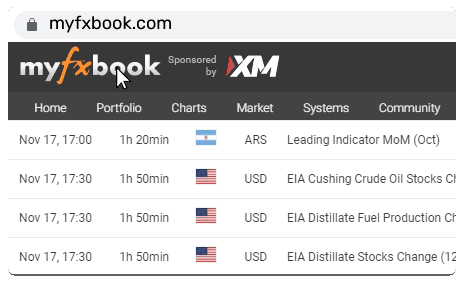Gold's rally meets reality: Octa broker explains if it's a downtrend or a fundamental technical correction

Gold (XAUUSD) sprinted too far ahead of itself, powered by central bank buying, rate-cut expectations, geopolitical unease, and the fear-of-missing-out (FOMO) frenzy. After months of climbing to one record after another, the price finally stumbled—a reminder that even the safest havens can overheat. Backed by more than a decade of market experience, Octa Broker unpacks what drove the rally, why the correction was bound to happen, and whether the long-term bullish case for gold still shines.
Brief rally overview—a year of relentless growth
From late 2023 through mid-October 2025, gold staged one of the most remarkable runs in modern history. The major surge came in 2025, when prices first broke the $3,000 barrier in March and then climbed steadily to $4,000, marking the 45th new all-time high of the year. By 20 October, gold futures contracts traded on the New York Commodity Exchange (COMEX) had touched $4,398 per ounce (oz), delivering a roughly 66% growth year to date—its strongest annual performance since 1979 oil crisis.
The rally was driven by a perfect storm of macroeconomic and geopolitical forces. Escalating regional conflicts and global instability pushed investors toward safe havens, while persistent inflation, trade tensions, and record central bank purchases added fuel to the fire. Indeed, the market is no longer responding to just short-term shocks but instead reacts to a more profound loss of confidence in policymakers, currencies, and the financial system itself. Dovish monetary policies, robust inflows into gold-backed Exchange Traded Funds (ETFs) (with over 80 tonnes added to gold ETFs in China alone this year), and the ongoing wave of de-dollarisation only amplified demand, propelling gold ever higher.
A sharp pullback as a welcome for bears or a mere technical correction
What had looked like an unstoppable rally suddenly hit a wall. By the end of October 2025, gold's rapid ascent gave way to a sharp pullback, sending XAUUSD below $4,000—a key support level—and reminding markets that even the strongest trends can stumble. The trigger was a unique convergence of positive geopolitical events that took place in the final weeks of October (see the list below) and several technical factors that helped exacerbate the decline.
- Donald Trump declared an end to the two-year-long Israel–Hamas War, pointing to the release of remaining hostages and a 20‑point peace plan as a turning point for the region.
- The U.S. president signalled a fair trade deal with Chinese President Xi Jinping and downplayed fears of a Taiwan‑related conflict, potentially mitigating the China–U.S. trade war and geopolitical risks. Following this, China's State Council's tariff commission said it would suspend its 24% additional tariff on U.S. goods for one year, retaining a 10% levy.
- The U.S. and Australia signed a critical minerals and rare earth agreement worth $3 billion, interpreted as a sign of growing cooperation and reduced supply‑chain risks.
- Vladimir Putin and Donald Trump's summit plans remained on the table, with Russia stating preparations are ongoing—hinting at possible diplomatic progress on the Russia–Ukraine War front.
- European and Ukrainian diplomats reported they were preparing a 12‑point proposal aimed at ending the war in Ukraine—a development that lifted hopes of broader stability in Europe.
Besides the optimistic background that spread across the media in a couple of days, there were purely technical factors that made the XAUUSD drop. Ahead of the U.S. Consumer Price Index (CPI) released on 24 October, which was expected to show moderate gains and indeed came in slightly below forecasts, many traders closed long positions, softening market support. This profit-taking was particularly acute following a multi-week rally, during which buyers snapped up gold at any available price, exhibiting a classic FOMO behaviour. The initial pullback quickly triggered a technical cascade: when prices slipped below the $4,180–$4,175 range, stop-sell orders were activated, accelerating the downward move. The effect was amplified by the market's structure at the tail end of a parabolic rally. With a surge of FOMO-driven buyers, the proportion of 'weak hands' was unusually high. As a result, gold's drop was sharper than typical corrections, reflecting not a change in fundamentals but a purely technical move.
A less-publicised, but significant, factor was the anticipated removal of a long-standing tax exemption policy in China. Indeed, on 1 November, Beijing lowered the full exemption on the 13% value-added tax (VAT) for certain gold purchases from the Shanghai Gold Exchange or the Shanghai Futures Exchange to just 6% until the end of 2027. This move is expected to raise the cost of gold for consumers, potentially curbing the buying spree in the world's largest consumer market. The news immediately sent shares of gold jewellery retailers and miners in China sharply lower, underscoring the market's sensitivity to physical demand drivers.
Short-term volatility, long-term strength
Despite the sharp squeeze, XAUUSD rebounded to test the $4,000 level almost immediately, within several following days. By 5 November, gold had risen nearly 1% to $3,963 an ounce, drawing safe-haven demand. This renewed interest was underpinned by a dramatic selloff in global equities, particularly in the tech sector, which drove volatility to highs last seen in April. Wall Street CEOs began openly questioning the sustainability of the stock market's valuation-driven rally, pushing investors back toward traditional safe havens like gold and government bonds.
Although the price has struggled to hold above the $4,000 mark for over a week, the long-term bullish trend remains intact. Analysts in a recent Reuters poll now forecast that gold will average $4,275 per ounce in 2026, marking the first time the annual forecast has topped $4,000. The short-term correction could extend toward $3,800, but this is likely a period of consolidation within a broader uptrend, as geopolitical tensions, trade uncertainties, and economic risks continue to support gold's safe-haven appeal.
Octa broker outlines three key reasons why gold remains in a major bullish trend and why buying the dips may be a sensible trading strategy going forward.
- Institutional demand. Central banks remain net buyers, having added 129 tonnes of gold in the first half of the year (with Poland, China, and Turkey leading the purchases), reinforcing bullion's role as a strategic reserve asset. Emerging market economies have bought 5,410 tonnes between 2010 and 2024, a strategic shift that underpins the long-term price momentum.Monetary policy. The Federal Reserve and its global peers continue to lean dovish. Although the probability of a 25 bp (basis points) rate cut in December is now lower than previously expected, markets are still pricing in a roughly 70% likelihood of easing. On top of that, the Fed has formally announced it will end its balance-sheet reduction (quantitative tightening) on 1 December, marking a shift toward more accommodative liquidity conditions.Physical markets. Despite price volatility and the recent festival-led slowdown in India—where the market briefly flipped to a discount—buying interest quickly resumed in hubs like China and Singapore as prices eased. Crucially, traders have shown little evidence of offloading physical holdings, with sellers remaining limited amid ongoing macroeconomic uncertainty and declining real interest rates.
In addition to the above, geopolitical risks remain elevated—peace in the Middle East and Eastern Europe is still fragile, while de-globalisation and trade frictions persist—all of which continue to underpin gold's safe-haven and hedge appeal in an uncertain world.
Disclaimer: This article does not contain or constitute investment advice or recommendations and does not consider your investment objectives, financial situation, or needs. Any actions taken based on this content are at your sole discretion and risk, and we and Octa do not accept any liability for any resulting losses or consequences.
Octa is an international broker that has been providing online trading services worldwide since 2011. It offers commission-free access to financial markets and various services used by clients from 180 countries who have opened more than 52 million trading accounts. To help its clients reach their investment goals, Octa offers free educational webinars, articles, and analytical tools.
The company is involved in a comprehensive network of charitable and humanitarian initiatives, including improving educational infrastructure and funding short-notice relief projects to support local communities.
Since its foundation, Octa has won more than 100 awards, including the 'Most Reliable Broker Global 2024' award from Global Forex Awards and the 'Best Mobile Trading Platform 2024' award from Global Brand Magazine.












